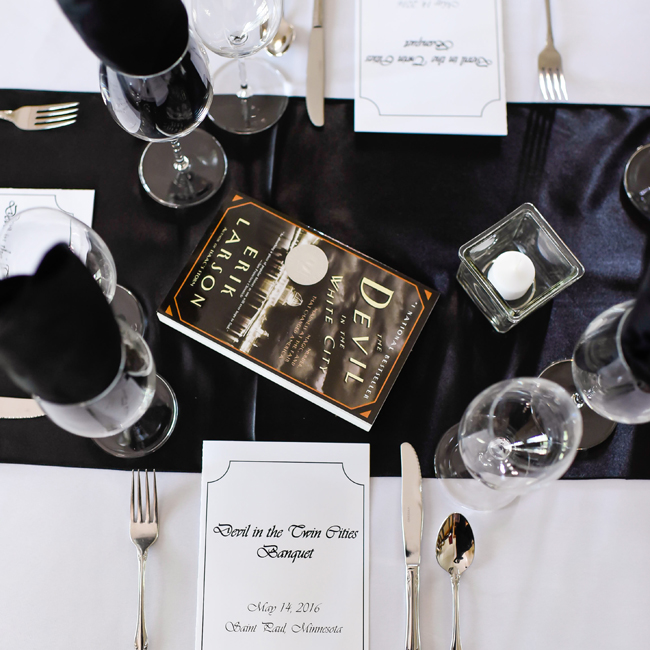
In late March he had been feted at a grand banquet arranged largely by Charles McKim and held in New York at Madison Square Garden — the old Garden, an elegant Moorish structure designed by McKim’s partner, Stanford White. McKim assigned Frank Millet to secure the attendance of the nation’s finest painters, and these took their seats beside the most prominent writers and architects and the patrons who supported them all, men like Marshall Field and Henry Villard, and together they spent the night lauding Burnham — prematurely — for achieving the impossible. Of course, they ate like gods.
— from The Devil in the White City, by Erik Larson
This passage — written about the organizers of the 1893 World’s Fair in Chicago — is fairly stirring by itself. Even more interestingly, it’s followed by a reprint of that night’s menu, an extravaganza containing something like 35 different tastes, everything from soup to beef to fish to cakes to cigarettes.
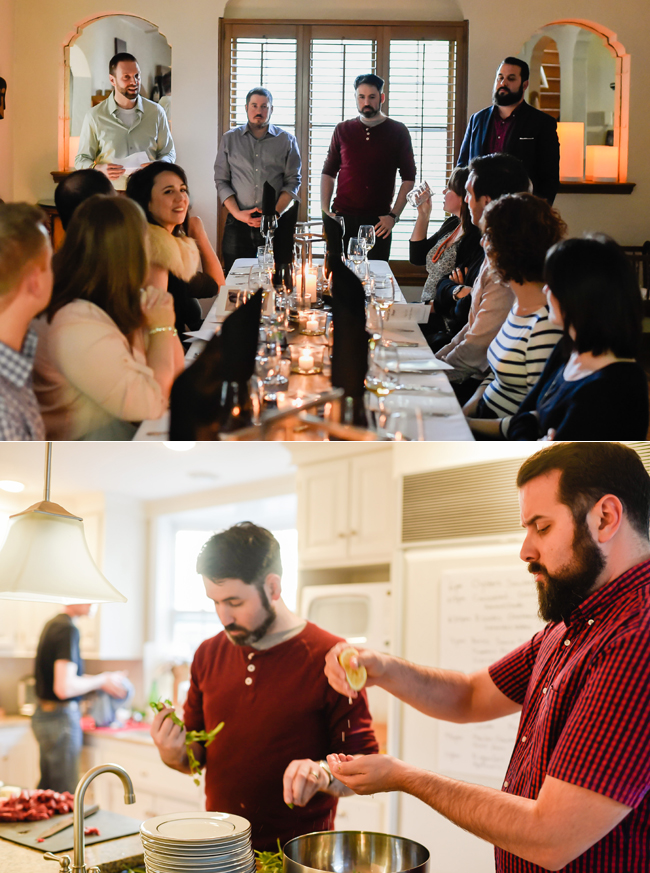
Fully aware that what we were doing was madness, our team (see below) committed to recreating the menu verbatim in a St. Paul feast we dubbed The Devil in the Twin Cities. What followed was a 19-person, six-hour, 10-course odyssey of cooking, eating, drinking, and general insanity. (Suffice it to say that when around 10 p.m. one of our cooks was drinking alcoholic punch out of a massive stainless steel mixing bowl, the impulse was honest, not a mere jest.)
What follows is a richly annotated and linked summary of our menu, plus some lessons from the evening that you can apply to the next insanely ambitious meal you attempt (or should you never attempt something like this, let the wisdom of your choice be a comfort to you).
CREDITS: Dan Norton (above, bottom photo left) came up with the idea of executing the menu, soup to nuts (or oysters to cheese, as the case may be), cooked a challenging course, and brought many of the after-dinner treats. Karsten (above, top photo far left) and Lauren Steinhaeuser agreed to host a throng of 19 people in their home, while Karsten shouldered some of the most difficult bits of cooking. David Friedman (above, bottom photo right) and Rose Daniels provided the lovely, complicated duck course that was the single most involved plate of the night. Various guests pitched in and saved our bacon over the course of the night. Chief among these was John Derscheid, whose mastery of hollandaise and command of the kitchen more generally elevated several dishes from mundane to divine.
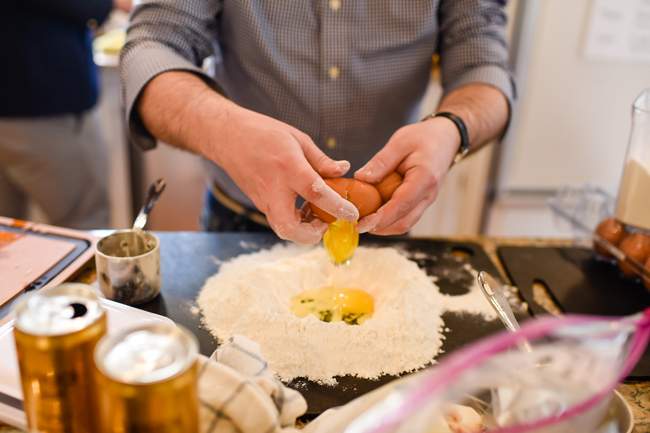
LESSON 1: HAVE A BACKUP PLAN
The dough was going through the pasta maker, but it looked as though it was going through a document shredder: It was emerging from the steel rollers torn to bits, sporting gaping holes. I held the tatters in my hands, cursed them, folded the dough back up, and tried again.
Dan had suggested the day before that buying backup pasta wouldn’t be a bad idea, but I had scoffed — haughtily scoffed — at his idea, as I’d executed fresh pasta a dozen times in the past without a problem. “Seriously,” I said, “nothing can go wrong with this.”
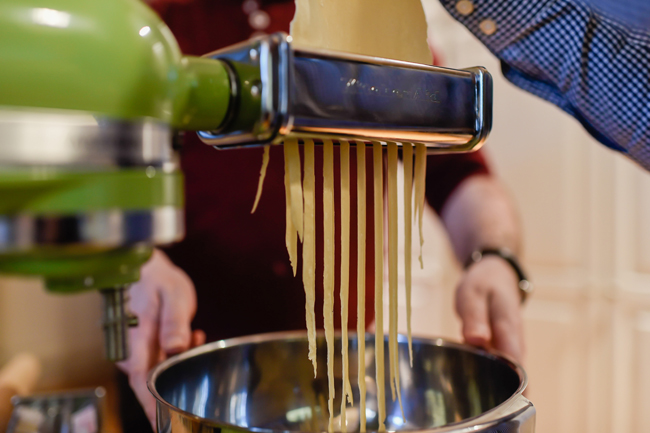
Several hours after the pasta debacle, Dave gave me something like a shout-out for the pasta as we idled in the kitchen, bottles in hand. “You died on that hill,” he said. He said it for two reasons: one, to spotlight the fact that I’d beefed it all up, hilariously, in the thick of the action, and two, to pay me a backhanded compliment — I’d run all of that dough into the ground, swearing and sweating, finally wringing about 10 plates’ worth of good pasta out of the effort.
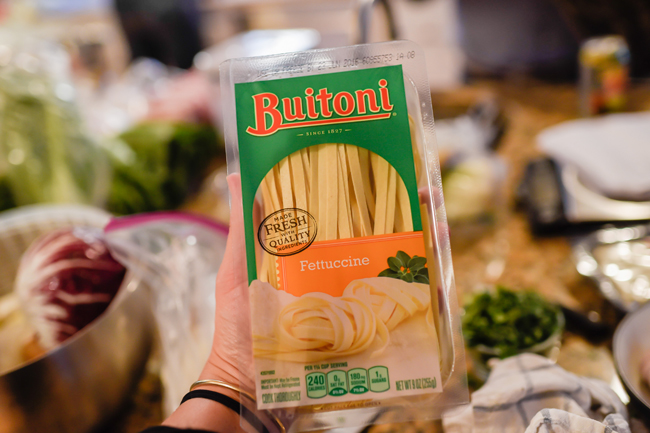
A guest named Ryan actually jogged to Kowalski’s to get store-bought fresh pasta to kit out the last nine plates. It wasn’t pretty, but we’d made it work. And we’d learned that my brother Dan had been 100 percent right that there was no harm in buying some fresh pasta as a backup. Just in case. You may wish to act similarly when the risk is high and the expense is low.
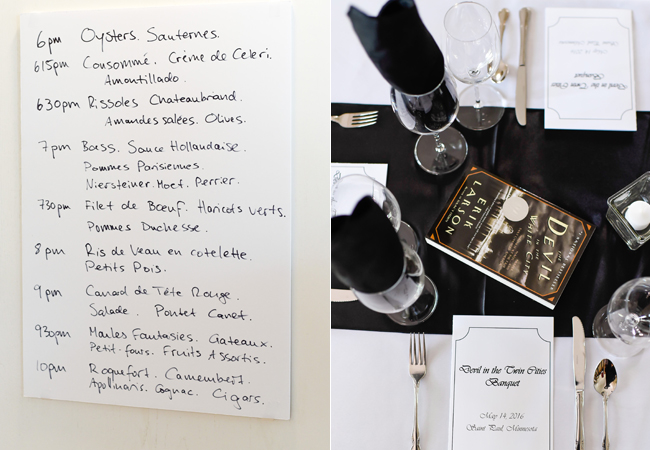
LESSON 2: PREP IS EVERYTHING
Any professional chef will tell you that you live or die by your prep, and we came into this meal with that maxim in mind.
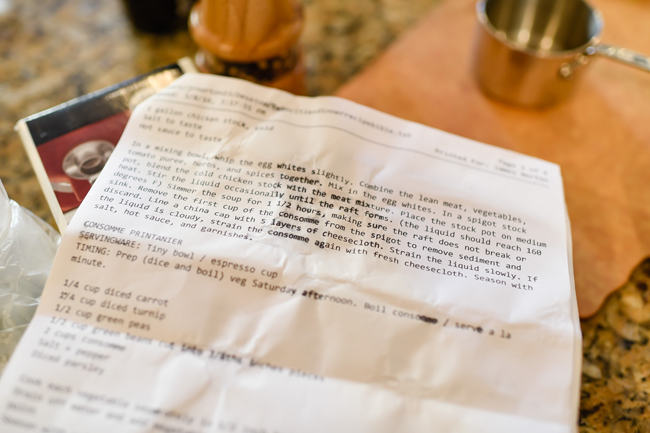
Critical to prepping was splitting up our menu. With around three dozen items to prepare, we were going to be lost in the mountains of madness if we just showed up and attempted to cook everything on the fly. Once our five contributing chefs staked out their sections, they could make lists, plan timing, and decide the essential steps to be taken the day before the dinner. Some dishes (the veal sweetbreads, for example) required two days; others (consommé printanier) went from agonizing to reasonable because of work done the day before.
Memories of prep: cracking 15 eggs (for their whites alone) for the consommé; watching Karsten delicately take the skin off the poached veal sweetbreads; staring at the menu and wondering if we’d done enough to stem the tide.
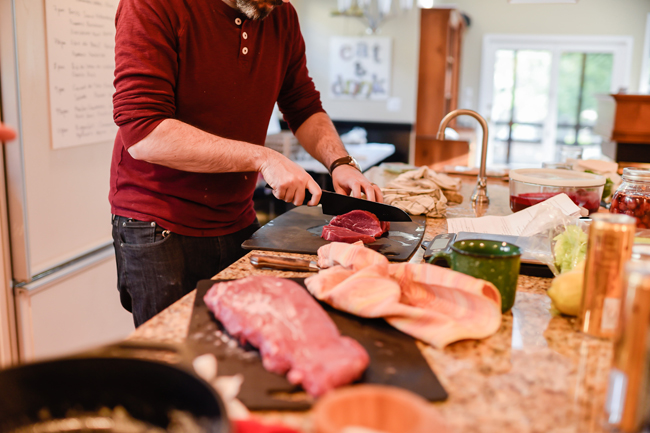
LESSON 3: KNOW YOUR PURVEYORS
It took us calls to 15 meat shops before we landed on Lowry Hill Meats for our veal sweetbreads. Another shop had them, but half as many as we needed and at $38 a pound; Lowry Hill was about half that price, and they had two pounds frozen, perfect for our needs. Their duck breasts were also fantastic.
Similarly helpful were the folks at Coastal Seafoods, who guided us to some wonderfully delicate and fresh oysters and a grouper that was one of the evening’s culinary high points.
The Wedge was replete with everything we needed in the produce department, including about nine kinds of salad greens and edible flowers. I suppose “need” is a relative word, here, but you get the drift.
Don’t trifle with your purveyors. When in doubt, email an expert, or at least hit me up on Twitter.
LESSON 4: GET HELP
Looking ahead to the chaos that was certainly more than 100 and probably fewer than 200 plates going out to and returning from the table, we decided to enlist a couple of culinarily curious and hardworking college students to help retrieve, wash, and serve dishes throughout the evening. Their unyielding effort was less glamorous than plating a bunch of canard and Rissoles Chateaubriand, but so fundamental to the evening that we’ll never again attempt a major party without some outside muscle.
Both of them were named “Alex,” which made the name thing a snap and will give birth to the idea of “hey, should we get some Alexes for this meal?” likely to be inevitably answered by the reply of “as long as they’re as good as the Alexes at the Devil in the Twin Cities dinner.”
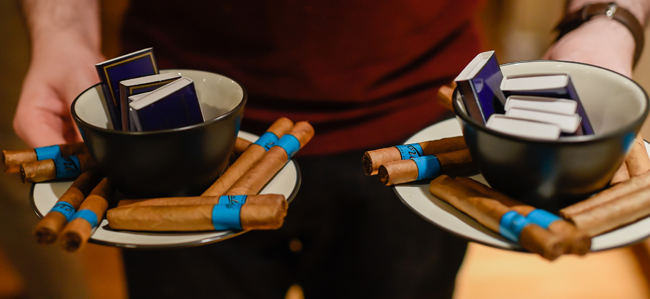
LESSON 5: THE CIGARETTE INTERVAL IS A BEAUTIFUL THING
The idea of halting a dinner party to smoke a cigarette seems essentially the opposite of high class, but that’s not how we felt after three hours of dining. The evening’s fresh air, the (admittedly pretty great) cigarillos, and the camaraderie of smoking and talking in a circle on the front stoop was one of the high points of the night. If we ever again put on a six- or seven-hour meal (odds are … good) the cigarette course will almost certainly appear again.
Key to this idea: get good cigarettes from a real tobacconist. We went to the excellent Tasting Room of Monona, near Madison.

LESSON 6: BUY MORE GIN
We bought a whole new bottle of New Amsterdam gin for our welcome cocktail, the Violet Beauregard (a gin and tonic plus a splash of creme de violette, which adds a lovely herbal sweetness to the finish of the drink). Fifteen guests arriving and a few thirsty chefs later, it was gone.
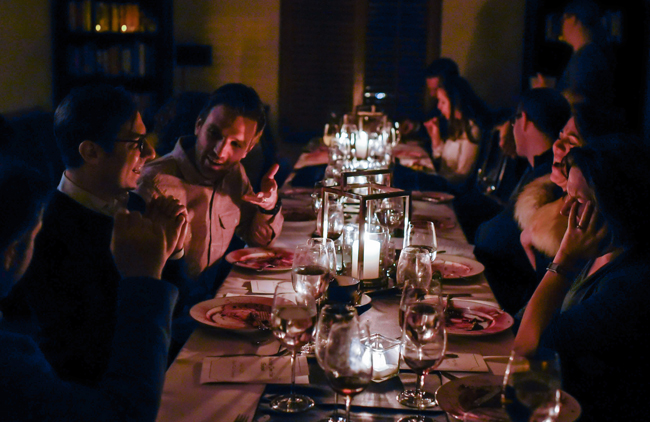
THE DEVIL IN THE TWIN CITIES: AN ANNOTATED MENU
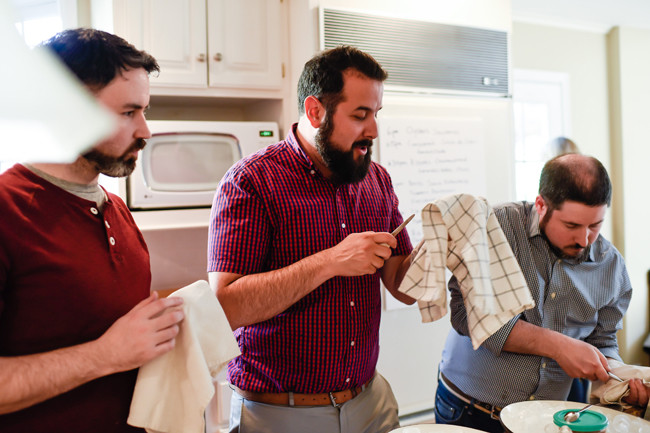
PLATE 1: Oysters
Blue Points à l’Alaska + mignonette. Blue Point oysters, in our experience, are poorly suited for riding on the half shell. They’re often huge, gooey, and unpleasant, and best handled with serious grilling, baking, and accessorizing. The always-competent and friendly staff at Coastal Seafoods steered us to a couple of West Coast oyster varieties: Hammersley and Pine Street, both delicate and gorgeously fresh. Our recipe: shuck, detach, and serve iced on the half shell with a homemade mignonette. Our recipe for mignonette: Epicurious.
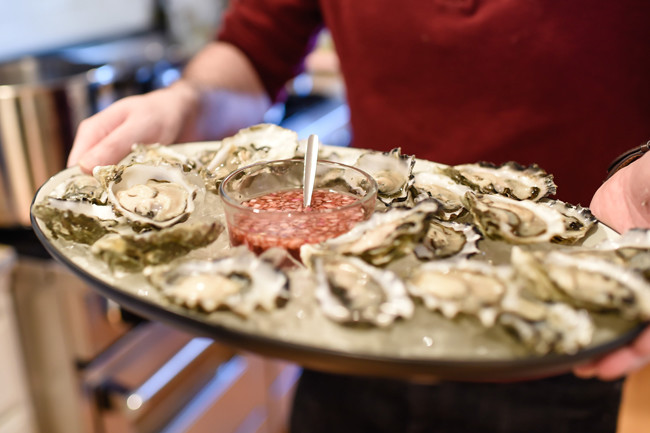
Sauternes. If you want a good sauternes, it appears that you must also pay good money. Since this was going to be the first wine to hit the table, we went reasonably big with Chateau La Tour Blanche — about $50 a 375-milliliter bottle. It paid off in two ways. First, the wine was subtle (sweet but in no way cloying) and delicious. Second, it was unexpectedly complementary to the oysters. “Unexpectedly” because when we mentioned this opening salvo pairing to a Surdyk’s employee, he goggled at us incredulously. Apparently meals just aren’t started with Sauternes these days; it’s solely a meal ender.
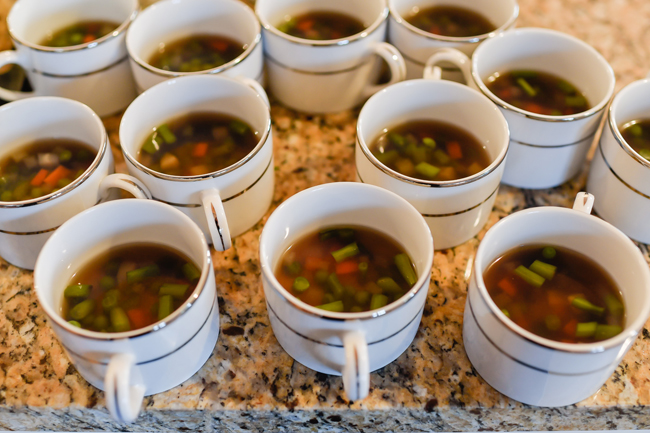
PLATE 2: Pôtages
Consommé printanier. “Ah,” I thought upon first looking at this course. “Easy. Consommé basically just means stock, right?” Well, yes and no. Consommé actually means “stock greatly intensified by a two-hour process that includes simmering (with a raft of ground chicken, herbs and vegetables, 15 egg whites, and more) and straining through cheesecloth. Day-before prep was a little grueling, but the actual night-of prep was a snap: Heat consomme to a low simmer, then add evenly chopped, pre-boiled vegetables. The resulting soup was rich and soothing. Our recipe: Emeril via the Food Network.
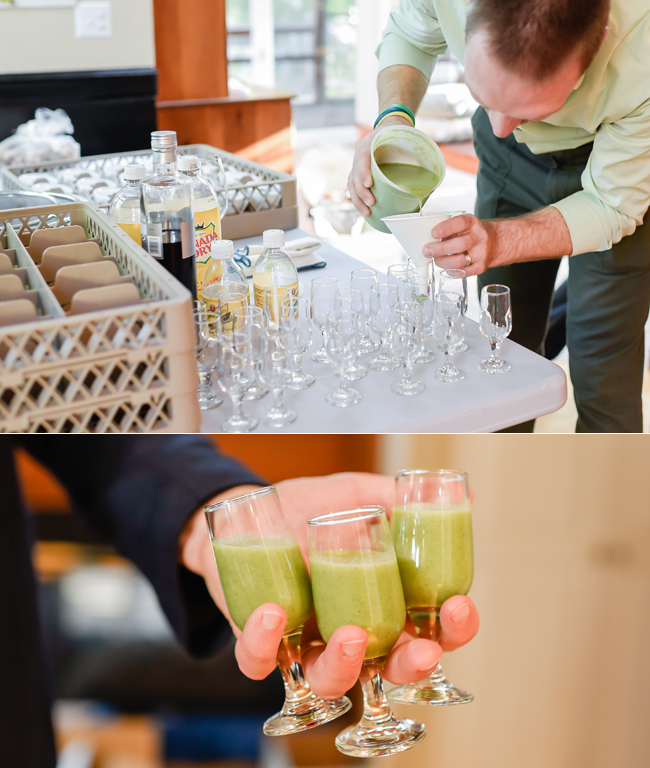
Crème de Céleri. This humble soup, comprised primarily of celery, potatoes, onions, and spinach, was a “doesn’t look like much on paper” hit. We served it cold as a shooter, and it had a cheerful brightness and depth that surprised us. Our recipe: Ricardo Cuisine (in French).
Amontillado. Surdyk’s cheap and pricey varieties were $12.50 and about $25 respectively, so we dropped the extra bit of cash and got the delightful Dios Baco, which played very well with the soups on the table.
PLATE 3: Hors D’Oeuvres
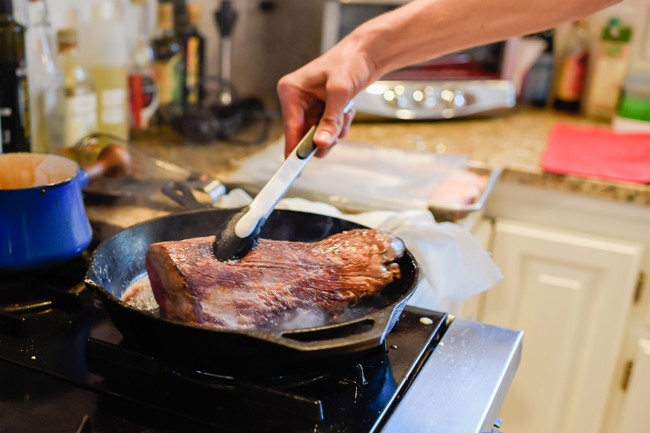
Rissoles Châteaubriand. If you’ve never thought of a beef tenderloin as an appetizer course, join the club. Buttered, seasoned, and sauteed, this was plated with a compound butter and watercress — simple as can be, but intensely pleasant, presuming you don’t overcook the beef. Despite no end of distractions in the kitchen, we didn’t. Our recipe — which, apparently unlike most for rissoles, doesn’t call for deep frying to create croquette-like fritters: About.com.
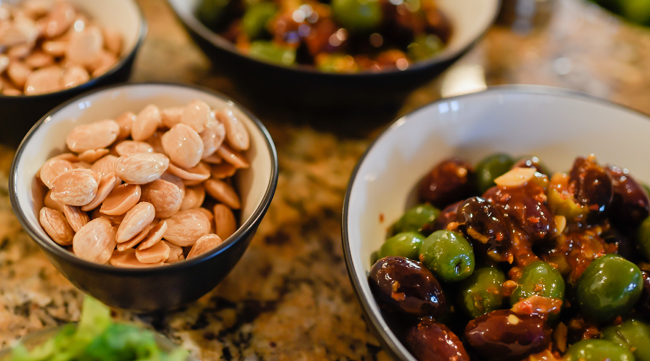
Amandes salées. If, in a project of this scale, you can cut a corner without damaging the dining experience, consider cutting that corner. Here, we just bought and plated marcona almonds, which are delicious and require exactly zero seconds of prep.
Olives. The inverse of the almonds. Rather than simply buy a variety of nice olives, we bought a variety of nice olives and then marinated them for two days before the dinner, loosely according to a method found in the excellent Morito cookbook: A mixture of orange juice, hot peppers, herbs, spices, olive oil, peppercorns, harissa, and more turned a humble starter into something a lot more complex and delightful. Our recipe: from the Morito cookbook.
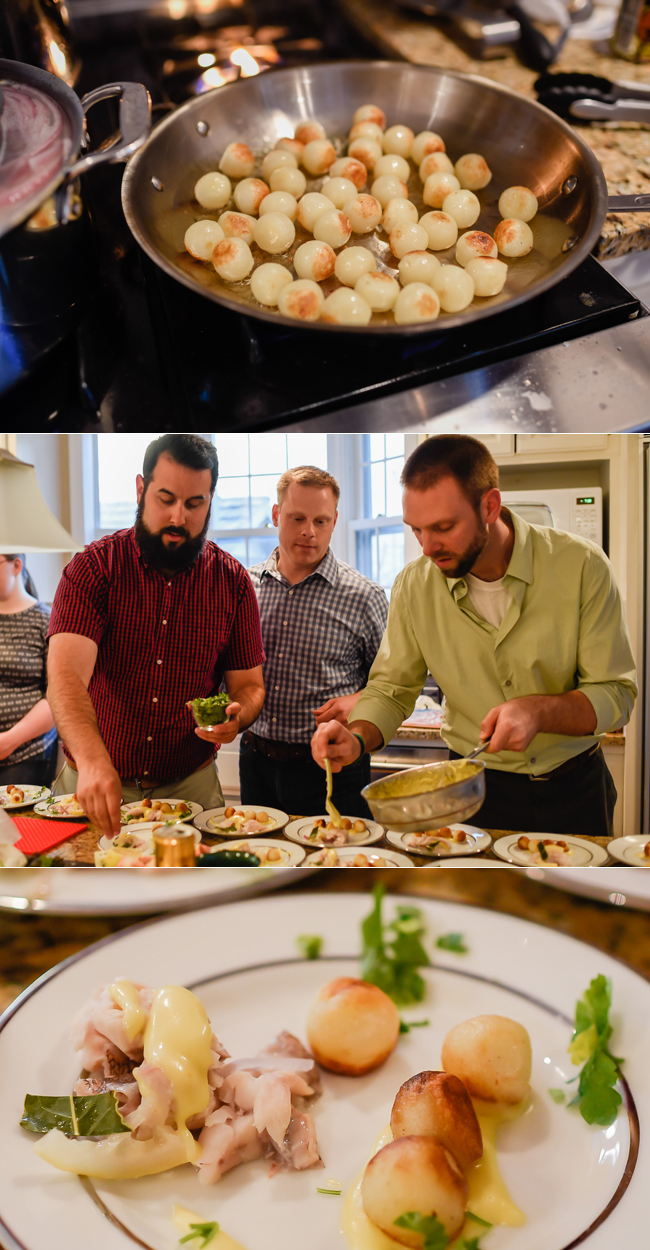
PLATE 4: Poisson
Bass rayée, sauce hollandaise. A conversation with the Coastal fishmongers resulted in a grouper substitution for the striped bass that turned out delicate, full-flavored, and lovely. The hollandaise sauce only blew up on us once, a real blessing. Our recipe: Spice Place.
Pommes parisiennes. These charming spheres of potato goodness took a bit of prep and thought to execute, but paid off on the plate, where they offered familiar and comforting flavors in a lovely-to-the-eye format. Our recipe: Rouxbe.
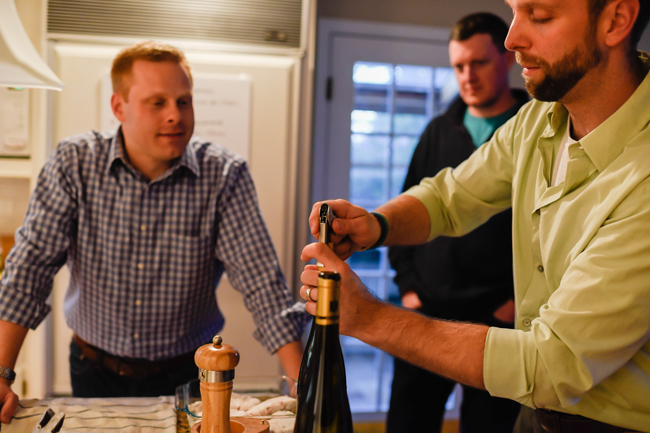
Niersteiner. Moët & Chandon. Perrier Jouët, Extra Dry Special. Trying to stay true to the original menu, this particular pairing was a bit of an adventure. First, Moet et Chandon — widely available, check. Second, Perrier Jouet Extra Dry Special — not made in decades, but re-branded as the present-day Brut — check. And finally, Niersteiner. This turned out to be (incorrectly) transcribed as Miersfeiner in the book and it took us a trip through the digital archives of the Art Institute of Chicago to retrieve a high-quality scan of the original menu (shout out to the archivists!) plus a native German speaker (Karsten) to figure this one out — just to learn by way of Solo Vino that this wine is not available in the US. But Karsten’s parents came to the rescue, having planned a visit from Germany the week prior — they managed to Internet-order and subsequently hand-carry three bottles of this dry Riesling just in time, and the effort was worth it.
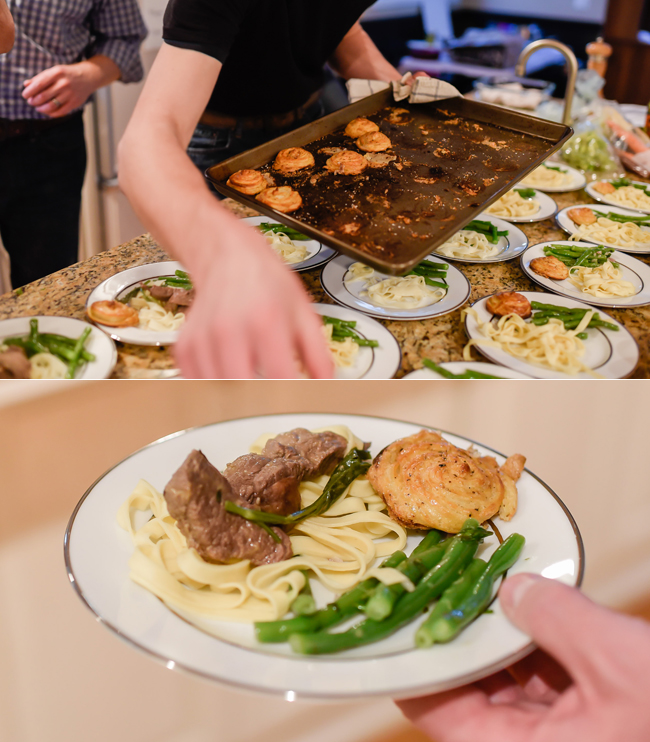
PLATE 5: Relevé
Filet de Boeuf aux champignons. The union of beef tenderloin strips, onions, mushrooms, and fresh pasta played out a little bit like a high-class stroganoff, rich in flavor and earthily satisfying. About half of our fresh pasta was house made (see above), and half store bought. The latter was eggier and more durable, the former more delicate and pliable. Our recipe: CuisineAZ (in French).
Haricots verts. The secret to this stealthily sexy side dish? Rolling fresh green beans (from the Wedge) through a premade compound butter before serving. Our recipe: Epicurious.
Pommes duchesse. Baked, piped, and baked again with an egg wash and seasoning, these potatoes are simple but delicious, and aesthetically awesome with their spiral-pyramidal profile. Our recipe: Saveur.
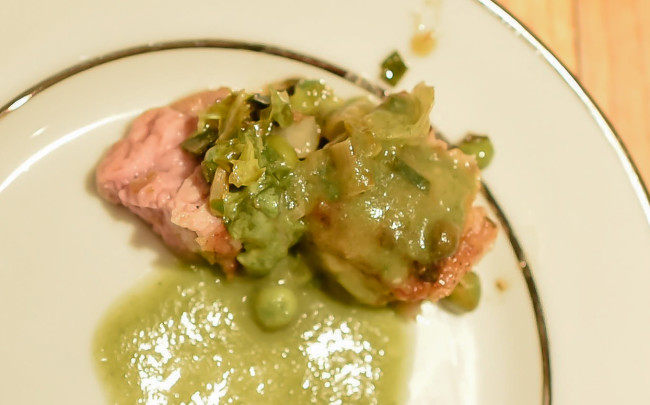
PLATE 6: Entrée
Ris de Veau en cotelette. Prepping sweetbreads is, as we discovered, a nontrivial task. The day before, we thawed and poached the sweetbreads, and then removed the fat membrane (doing this under water seemed to help). The night of the dinner, we seasoned, dredged, and sauteed the sweetbreads before portioning them out and saucing them. They turned out rich and tender, as luxurious as we’d hoped. Our recipe: Emeril via Food Network.
Petits Pois. Petits pois is a pea dish, and it was at this point in the evening that we realized that we were almost completely out of peas. Some hasty improvisation later, and the plate was dressed with a mixture of greens and a sauce comprised of extra crème de céleri soup from the soup course.
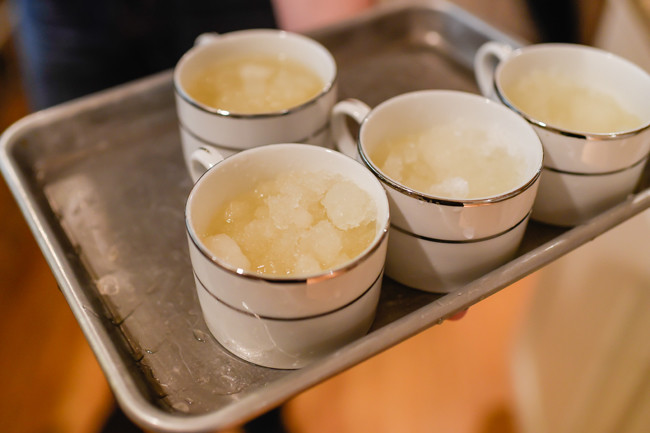
PLATE 7: Sorbet
Romaine fantaisie. We feared this was a salad, and were cheered to find out it was a highly alcoholic sorbet. One mostly failed blender-versus-ice combat later, and we were putting out very refreshing cups of mostly melted ice covered in chilled white wine, orange juice, simple syrup, sparkling wine, and lemon juice. The stuff that didn’t make it into the cups got repurposed as “white wine sangria.” The stuff that didn’t make it into wine glasses was consumed by the chefs straight from the pitcher or the mixing bowl. Our recipe: Better Recipes.
Cigarettes. Nat Sherman cigarillos, mild, sweet, and almost creamy in flavor. When our pack of 12 or so smokers re-entered the house, other guests remarked upon how (unexpectedly) nice we collectively smelled.
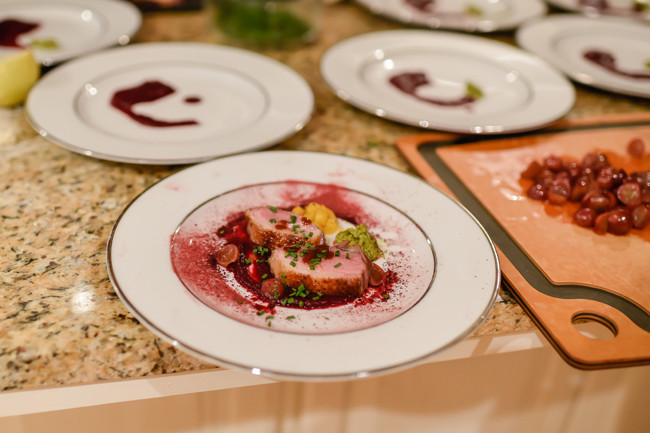
PLATE 8: Rôti
Canard de Tête Rouge. The Mount Everest of the evening, prepared by Dave Friedman and Rose Daniels: duck cooked sous vide and then seared, plated with beet puree and dehydrated beet powder, astoundingly good pickled grapes, chives, burnt lavender honey, watercress pesto, and roasted butternut squash. Our recipe for pickled grapes: Serious Eats.
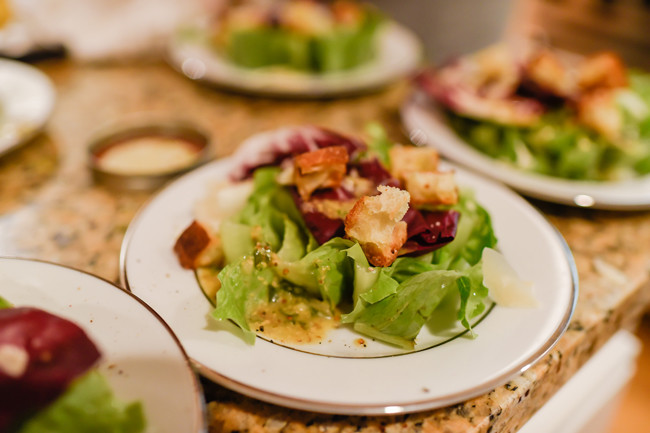
Salade de Laitue. Romaine, radicchio, and endive salad with mustard-shallot vinaigrette and homemade croutons. Our recipe: Martha Stewart.

Pontet Canet. We substituted a lovely Chateau Pibran 2010, figuring that a $180 bottle of wine might be wasted near the end of a meal this big and boozy.
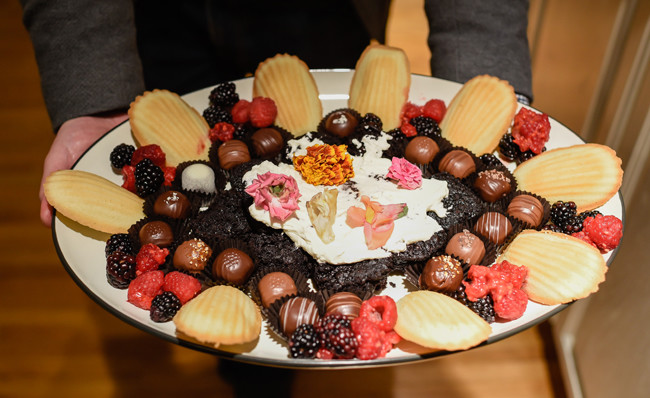
PLATE 9: Dessert
Petits Moules fantaisies, Gâteaux assortis, Bonbons, Petits fours. We read this as “a boatload of dessert options,” which we further boiled down to a more realistic spread that included a two-day-aged coffee-whiskey-cocoa Bundt cake, Candinas chocolates from Madison, and premade but tolerable madeleines. Plan A was that our cake would be turned out of delightful little nut- and honeycomb-shaped molds. Plan B is that because the cakes came out of the molds looking like they’d gone through a hailstorm, we frosted them with whipped cream and topped them with edible flowers. Tasted great, though. Our recipe for the Bundt cake: Epicurious.
Fruits assortis. We went with raspberries and blackberries. The former kind of disintegrated after rinsing, but ultimately the contrast between berries, chocolate, and madeleines was satisfying to all.
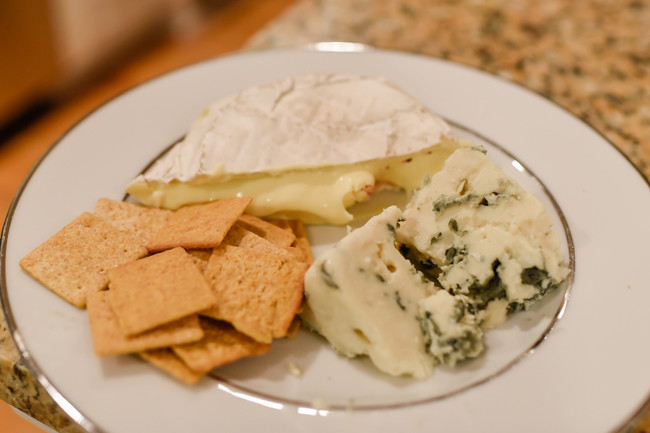
PLATE 10: Cheese
Roquefort et Camembert. The former: first-rate Roquefort by Société of France. The latter: the lovely Bent River Camembert-style cheese by Minnesota’s own Alemar.
Café. Peace Coffee. We served it with the previous course.
Apollinaris. Sparkling water. I don’t know if this ever got served. We planned to. A lot happened between planning this and 11:15 p.m., when it might have been served.
Cognac. Cordials. Cigars. Skipped, a fine Calvados, and skipped, respectively. We reached a harmonious and glorious end of the meal, full but not overstuffed, and no more in need of either tobacco or alcohol.
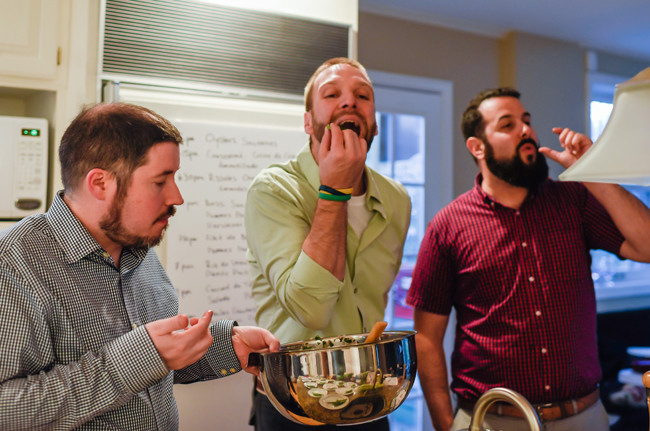

So what was the monetary tally of this meal? I’m curious.
Awesome!